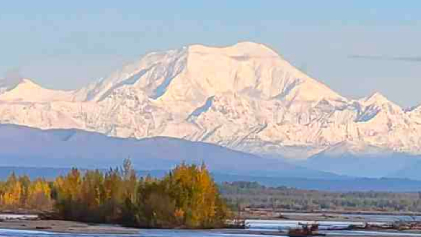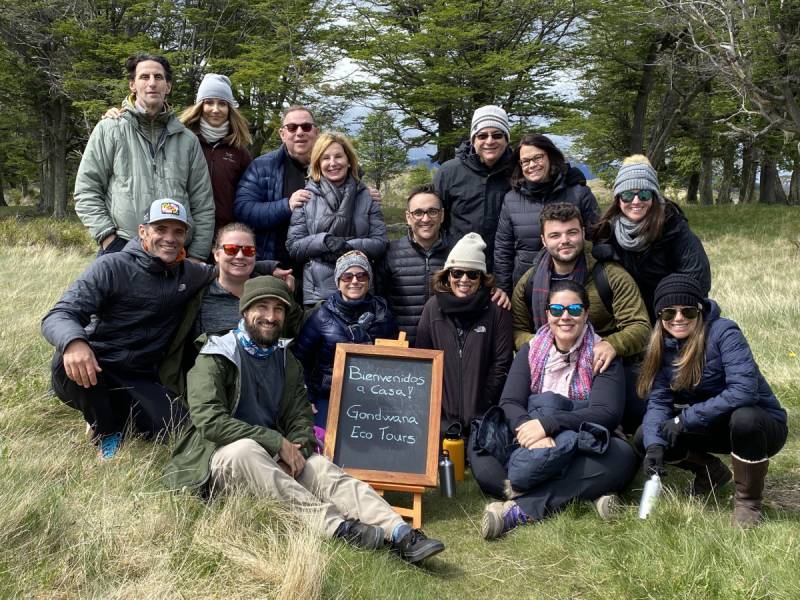Visiting Alaska’s Amazing Bear Island
Download Travel Details >PRIVATE & SMALL GROUP TOURS TO THE WORLD'S BEST DESTINATIONS
Three Amazing Alaskan Vacations To Choose From!

What Bears Are In Alaska?
If you are wondering what bears are in Alaska, this article is for you! Alaska is the only place in the world where you can find three different kinds of bears: black bears (Ursus americanus), brown bears (Ursus arctos), and polar bears (Ursus martimus). One of the best places to see bears in Alaska is Kodiak Island, which is located in the Kodiak Archipelago. This incredible place is truly Alaska’s Bear Island. Keep reading more to learn about the bears of Kodiak Island.
How To Get To Kodiak
Kodiak Island is located off of Alaska’s southern coast. It is the second largest island in the United States – and the largest in Alaska – covering 3,670 square miles of land. The island's southwestern region is part of the Kodiak National Wildlife Refuge. It’s here that you will find some of the best bear viewing in Alaska.
Kodiak Island is a remote, wilderness area. Getting to this Alaska Bear Island will take a little planning! Most visitors fly into Anchorage on a major airline and then take a smaller floatplane to the island. Alternatively, you can drive from Anchorage to Homer, and then catch a ferry that will take you to Kodiak Island and its bears.
Five Fun Facts About The Kodiak Grizzly
Kodiak bears are a unique subspecies of the brown or grizzly bear (Ursus arctos middendorffi). They live exclusively on the islands in the Kodiak Archipelago and have been isolated from other bears for about 12,000 years. More than 3,500 Kodiak bears are living on Kodiak Island, meaning that you will find one bear approximately every square mile.
- Bears, including Kodiak bears on Alaska’s bear island, are naturally diurnal. However, when faced with competition for food resources, they modify their behavior and begin hunting at night.
- Kodiak bears are the largest bears in the world. A male Kodiak bear can stand over 10 feet tall when on his hind legs, and 5 feet tall when on all four legs. The males can weigh up to 1,500 pounds. Female Kodiak bears are about 20 percent smaller and 30 percent lighter than males.
- The oldest known wild Kodiak bear was a 34-year-old sow (female). The oldest boar (male) was 27.
- Bear cubs are born in the den during January or February. Weighing less than a pound at birth, they are born hairless and with their eyes closed. They emerge from the den with their mother in May or June, weighing 15-20 pounds.
- Kodiak bears begin entering their dens in late October. Pregnant sows are the first to go to dens, males are the last. Males begin emerging from their dens in early April, while sows with new cubs may stay in dens until late June. Some males may forego denning, staying awake all winter.
Visiting Alaska’s National Parks To See Bears
If traveling to a remote Alaska bear island is not on your bucket list, there are many other places to see bears in Alaska, including a visit to one of Alaska’s National Parks to see bears. Alaska is home to a stunning 16 national parks, all of which offer visitors incredible wildlife viewing opportunities. But our five favorite parks to go bear-watching are listed below.
- Katmai National Park and Preserve – located in southern Alaska, Katmai’s wild landscapes include tundra, forests, lakes, and mountains. The park is known for the many brown bears that are drawn to the abundant salmon in Brooks Falls. Lookout platforms at nearby Brooks Camp offer close-up views of the bears. Day trips as well as multi-day stays are offered by many Alaska guides.
- Lake Clark National Park and Preserve – located in southwest Alaska, Lake Clark is almost just as popular as Katmai for brown bear viewing. Accessible only by floatplane, the park is popular for both day trips and multi-day bear excursions. Popular viewing options include watching bears dig for clams along the shoreline from the safety and comfort of a covered boat.
- Denali National Park and Preserve - Denali National Park and Preserve encompasses 6 million acres of Alaska’s interior wilderness. With terrain of tundra, spruce forest, and glaciers, the park is home to a variety of wildlife, including grizzly bears, wolves, moose, caribou, and Dall sheep. While Denali National Park has a healthy population of grizzly bears, you won’t find them gathering in large concentrations like they do at Brooks Camp. Instead, they roam across a vast territory either as solitary animals or small family units of mother and cubs, foraging for food. You can also see black bears in Denali National Park, most typically in the forested areas.
- Kenai Fjords National Park – if you want to see Alaska bears in a National Park, Kenai Fjords National Park is a great option! The park encompasses the Harding Icefield as well as glaciers, coastal fjords, and islands. Kenai Fjords is home to both brown and black bears, although black bears are far more common. Bear and human interactions may occur but are not generally common. Black bears are generally timid and will usually leave an area to avoid a threat.
- Kobuk Valley National Park – this park is located in the Arctic region of northwestern Alaska, just 25 miles north of the Arctic Circle. But you won’t find polar bears there – instead, you will find brown and black bears. Brown bears like the park’s wide-open tundra, while black bears prefer the forested areas - although they will sometimes venture out onto the tundra in search of food.
Now that you know what bears are in Alaska, you can start planning the wildlife viewing experience of a lifetime! From an island that has more bears than people to national parks where bears emerge from hibernation to prepare for the next winter season, Alaska offers almost unlimited bear-watching opportunities. Get ready to explore Bear Country!


